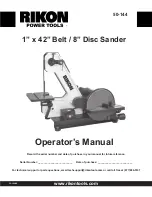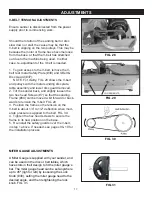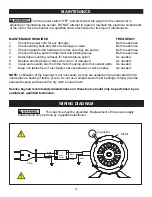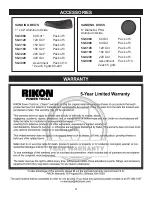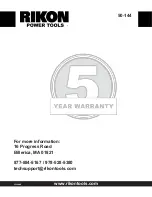
13
DISC SANDING
1. Depending on what type of sanding that you
will be doing, set the Sanding Disc Table to the
proper angle from 45° to 90°.
2. Once the table has been set for the correct
sanding angle, and all fasteners are secure, the
machine can be plugged in for operation.
3. Use the Miter Gauge for added control of the
work piece during sanding. The miter gauge can
also be set to various degree angles for maintain
-
ing accurate angles when sanding small or
multiple parts.
4. Do not force the work piece into the sanding
disc. Sand using light pressure, letting the sand
-
ing abrasives time to do their work!
5. Move your work piece slightly left and right on
the disc, keeping to the left-of-center, downward
side. This will help prevent resin or debris from
building up on one area of the disc, and also
helps to prevent burning of the sanded surface
from excessive abrasive-action heat build-up.
FIG. 16
FIG. 17
FIG. 18
OPERATION
When sanding, always position
your work on the downward, rotating side (left
side) of the sanding disc. FIG. 16. The sanding
action will then force the wood down, safely
towards the table, where it can be controlled.
Sanding on the right, upward rotating side of
the disc is dangerous, as your work cannot be
controlled and ‘kick-back’ may occur - the wood
being forced up and out of your hands.
Always ensure the sander is
unplugged prior to attempting any assembly,
installation or changing of parts and accessories.
NOTE:
It is strongly recommended that users
employ a dust-collection system when using this
belt & disc sander. Use of a dust mask or res
-
pirator is still recommended, even when a dust
collection system is in use.

